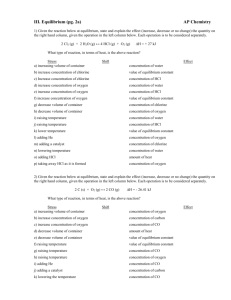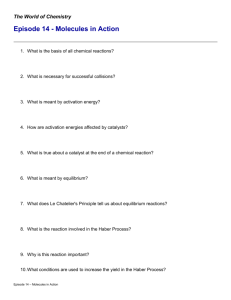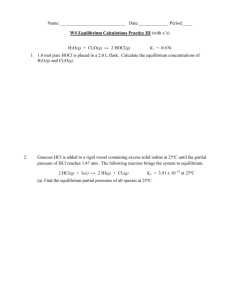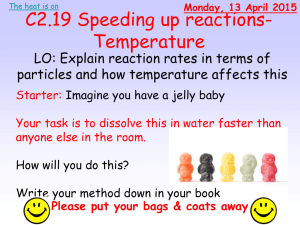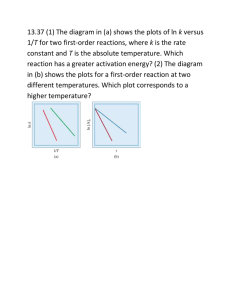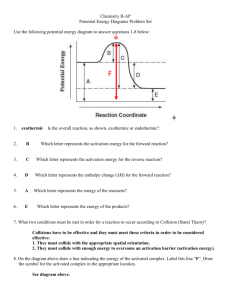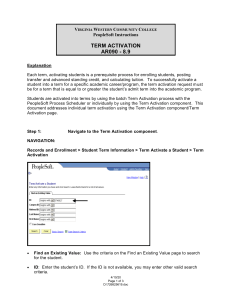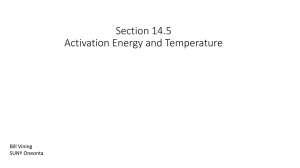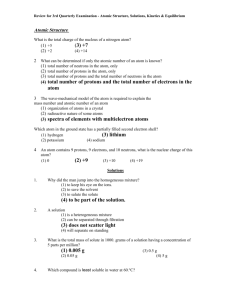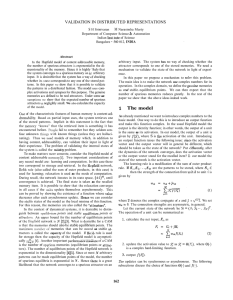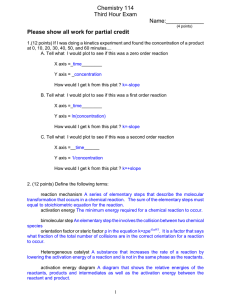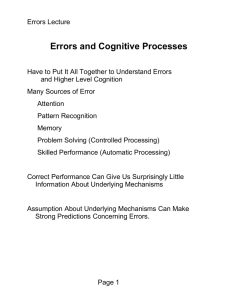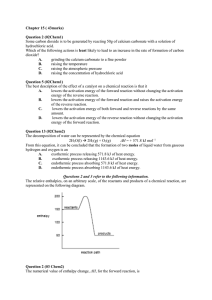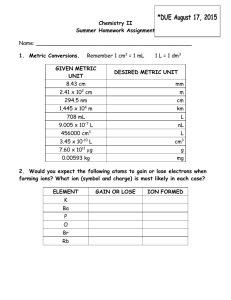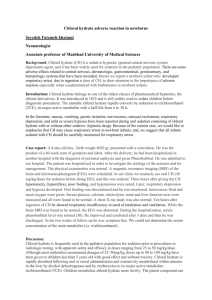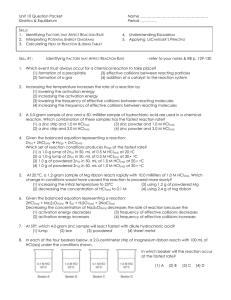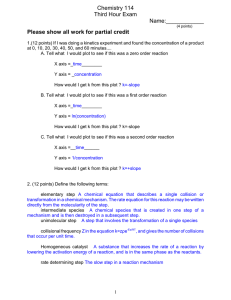Exam Questions on Rate and Equilibrium
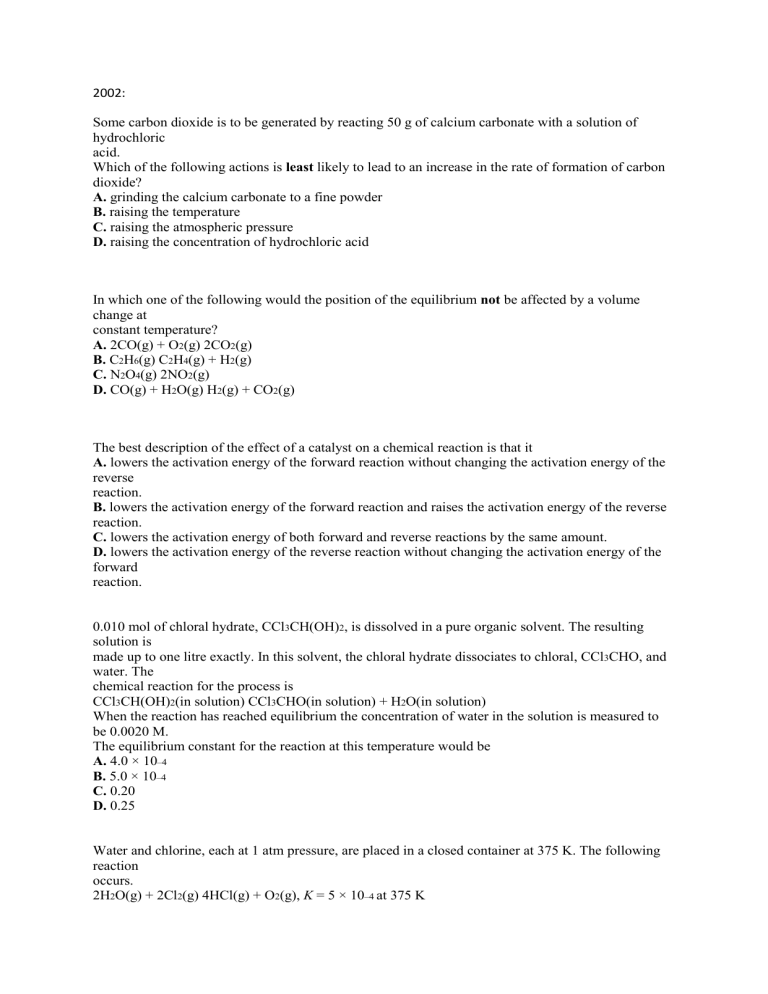
2002:
Some carbon dioxide is to be generated by reacting 50 g of calcium carbonate with a solution of hydrochloric acid.
Which of the following actions is least likely to lead to an increase in the rate of formation of carbon dioxide?
A. grinding the calcium carbonate to a fine powder
B. raising the temperature
C. raising the atmospheric pressure
D. raising the concentration of hydrochloric acid
In which one of the following would the position of the equilibrium not be affected by a volume change at constant temperature?
A. 2CO(g) + O
2
(g) 2CO
2
(g)
B. C
2
H
6
(g) C
2
H
4
(g) + H
2
(g)
C. N
2
O
4
(g) 2NO
2
(g)
D. CO(g) + H
2
O(g) H
2
(g) + CO
2
(g)
The best description of the effect of a catalyst on a chemical reaction is that it
A. lowers the activation energy of the forward reaction without changing the activation energy of the reverse reaction.
B. lowers the activation energy of the forward reaction and raises the activation energy of the reverse reaction.
C. lowers the activation energy of both forward and reverse reactions by the same amount.
D. lowers the activation energy of the reverse reaction without changing the activation energy of the forward reaction.
0.010 mol of chloral hydrate, CCl
3
CH(OH)
2
, is dissolved in a pure organic solvent. The resulting solution is made up to one litre exactly. In this solvent, the chloral hydrate dissociates to chloral, CCl
3
CHO, and water. The chemical reaction for the process is
CCl
3
CH(OH)
2
(in solution) CCl
3
CHO(in solution) + H
2
O(in solution)
When the reaction has reached equilibrium the concentration of water in the solution is measured to be 0.0020 M.
The equilibrium constant for the reaction at this temperature would be
A. 4.0 × 10
–4
B. 5.0 × 10
–4
C. 0.20
D. 0.25
Water and chlorine, each at 1 atm pressure, are placed in a closed container at 375 K. The following reaction occurs.
2H
2
O(g) + 2Cl
2
(g) 4HCl(g) + O
2
(g), K = 5 × 10
–4 at 375 K
Which one of the following will be correct at equilibrium at this temperature?
A. 2[O
2
] > [Cl
2
]
B. 2[Cl
2
] > [HCl]
C. 2[HCl] = [Cl
2
]
D. [O
2
] = 4[HCl]
Given the equilibrium,
A
2
(g) + 4C(g) ↔ 2AC
2
(g), K
1
= 4.8
It follows that, for the reaction,
AC
2
(g) ↔ ½ A
2
(g) + 2C(g), K
2
= X
X would be
A.
1/48
B. 2.4
C. 1/2.4
D. 1/
(4.8)
In pure water at 5 o
C the hydroxide ion concentration is measured to be 4.0 × 10 –8 M.
The K w and pH of pure water at this temperature will be, respectively,
A.
1.0 × 10 –14 and 7.0
B.
1.0 × 10 –14 and 6.6
C.
1.6 × 10 –15 and 7.0
D.
1.6 × 10 –15 and 7.4 1

